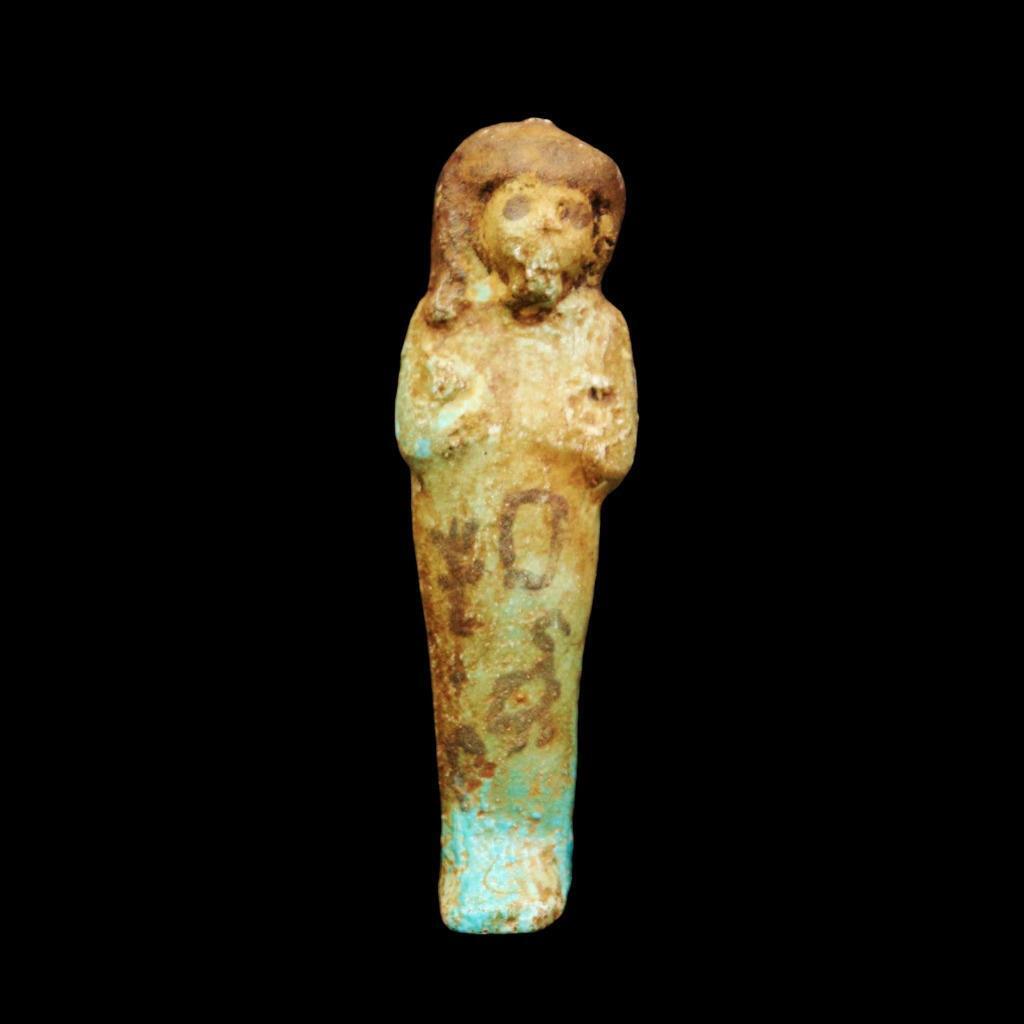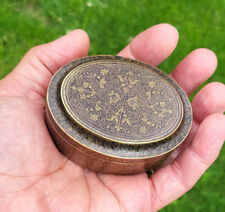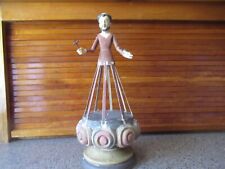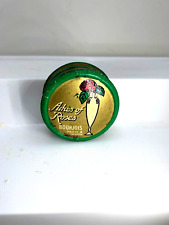Fine Antique Egyptian Stone/Faience Ushabti (Shabti) Statue Figure...VERY UNIQUE For Sale

When you click on links to various merchants on this site and make a purchase, this can result in this site earning a commission. Affiliate programs and affiliations include, but are not limited to, the eBay Partner Network.
Fine Antique Egyptian Stone/Faience Ushabti (Shabti) Statue Figure...VERY UNIQUE:
$70.00
Fine Antique Egyptian Stone/Faience Ushabti (Shabti) Statue Figure...VERY UNIQUE Fine Antique Egyptian Stone/Faience Ushabti (Shabti) Statue Figure...VERY UNIQUE Click images to enlarge
DescriptionUP for sale… Amazing Antique Egyptian Stone/Faience Ushabti (Shabti) Statue Figure.....VERY UNIQUE, With great details.....ONE OF A KIND
USHABTIES: Ushabtis, also spelled as \"ushabtis\" or \"shawabtis,\" were small figurines in ancient Egyptian culture with significant funerary and religious significance. While they don\'t have traditional biographies, I can provide you with information about their history and role:
**Origin and Evolution**
- Ushabtis first appeared during the Middle Kingdom period of ancient Egypt (c. 2040-1640 BCE) and became more prevalent during the New Kingdom (c. 1550-1070 BCE).
- The term \"ushabti\" is derived from the ancient Egyptian word \"wsḫb,\" which means \"answerer\" or \"servant.\"
**Purpose and Function**
- Ushabtis were intended to serve the deceased in the afterlife by performing labor on their behalf. They were often placed in tombs with the deceased to ensure a comfortable and prosperous afterlife.
- The belief was that in the afterlife, the deceased would be required to perform various tasks, and the ushabtis would come to life and act as substitutes for these tasks.
**Appearance and Inscriptions**
- Ushabtis took the form of small figurines, typically made of materials such as wood, faience, or stone.
- They were often inscribed with spells or incantations, particularly from the \"Book of the Dead\" or the \"Book of the Going Forth by Day,\" which were guides to the afterlife.
- The inscriptions were meant to invoke the magical power of the figurines and ensure that they fulfilled their intended purpose.
**Variations and Types**
- Ushabtis varied in style and size, with some tombs containing large numbers of these figurines.
- They could be highly detailed and vary in quality based on the social and economic status of the deceased.
- Some ushabtis featured tools or farming implements, emphasizing their role as laborers in the afterlife.
Ushabtis played a crucial role in ancient Egyptian funerary practices, reflecting the belief in an afterlife where the deceased would require assistance in carrying out various duties. These figurines continue to provide valuable insights into the religious and spiritual beliefs of ancient Egyptians and remain a significant aspect of their archaeological legacy.
DIMENSIONS
+ 10.5 x 3.3 x 2 cm (4.2\" x 1.3\" x 0.8\" Inches)
+ [63] grams in weight.
CONDITIONS
+ Intact in original condition, No repairs or restoration
+ Place of Origin is Luxor / Egypt.
>
Terms of Sale
** Returns **
> About Us
** Authenticity **
Contact Us Feel Free to Contact Us With Any Questions Before offerding Images sell!
Get Supersized Images & Free Image HostingCreate your brand with Auctiva\'s
Customizable Templates.
Attention Sellers - Get Templates
Image Hosting, Scheduling at Auctiva.com.
Track Page Views With
Auctiva\'s Counter

Related Items:
Rare Fine Antique c. 1920 Uttar Pradesh Engraved Bronze Oval Box 1.5" h 3.2" w
$212.00
Fine Antique Doll Cage Santos of St Francis
$241.00
Petite & fine Antique powder rouge box. Ashes of Roses by Bourjois, UK. 1923.
$84.00



